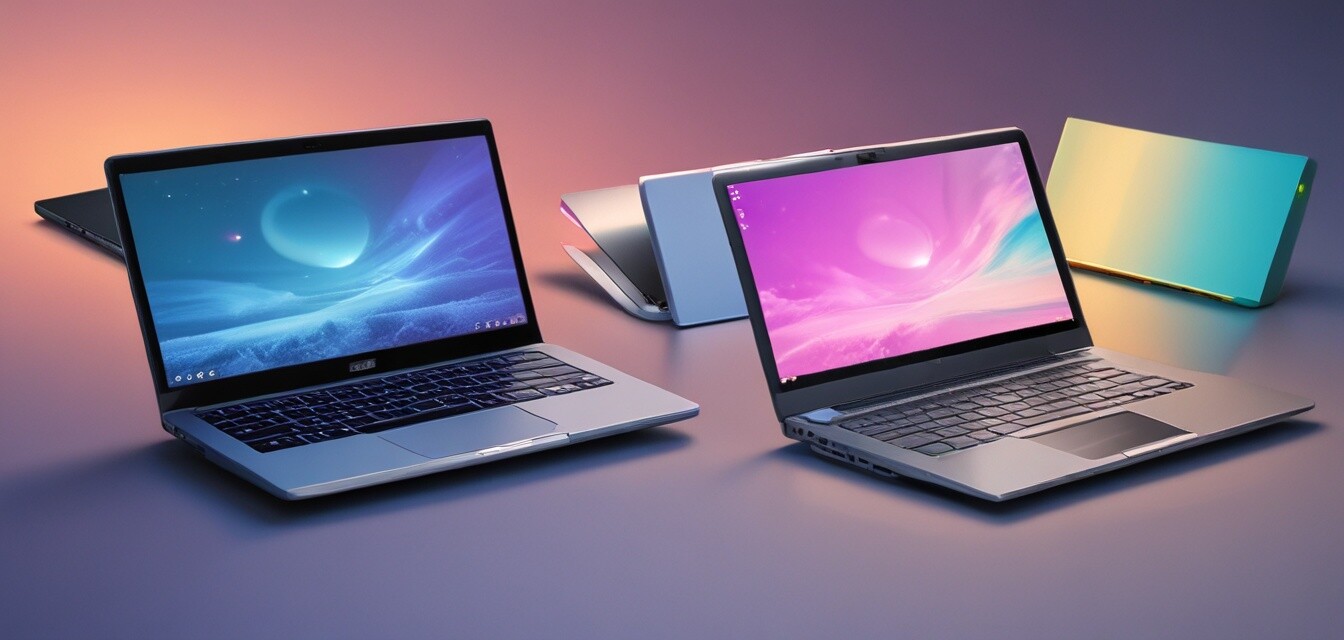
The Evolution of Laptop Designs Over the Decades
Key Takeaways
- Laptop designs have transformed significantly since their inception in the 1980s.
- Key trends include the transition from bulky models to lightweight ultrabooks.
- Innovations such as 2-in-1 convertibles and gaming laptops have reshaped consumer expectations.
- Future trends may focus on enhanced portability, sustainability, and advanced features.
The world of laptops has seen remarkable transformations since the first portable computers hit the market. Initially heavy and bulky, modern laptops have evolved into sleek, highly functional devices. This retrospective will explore the major design changes that have occurred over the decades while also predicting what the future may hold for laptop designs.
A brief history of laptop designs
To understand the evolution of laptop designs, let’s take a look at the various stages they have gone through:
| Decade | Key Design Features | Popular Models |
|---|---|---|
| 1980s | Heavy, bulky design, monochrome displays | Commodore 64, Toshiba T1100 |
| 1990s | Introduction of color screens, heavier overall weight | IBM ThinkPad, Apple PowerBook |
| 2000s | Thinner designs, improvement in battery life, beginning of compact models | Dell Inspiron, Asus Eee PC |
| 2010s | Sleeker profiles, emergence of ultrabooks, touchscreen capabilities | MacBook Air, Lenovo Yoga |
| 2020s | Focus on portability, advanced features like AI integration | Various brands focusing on ultra-light models |
Design trends through the decades
The 1980s: The birth of portability
Laptops in the 1980s were revolutionary. They brought computing power into a portable form factor, although the designs were typically bulky and often required external power sources. Early models focused more on functionality than aesthetics.
The 1990s: Rise of the multimedia laptops
As technology improved, so did the design of laptops. The 1990s saw the introduction of color screens and better sound systems. Notable models such as the IBM ThinkPad became popular in both business and home settings.
The 2000s: The dawn of compactness
The desire for portability resulted in laptops becoming slimmer and lighter. The Asus Eee PC was one of the first netbooks, appealing to users seeking a simple computing device without excessive weight.
The 2010s: Ultrabooks and hybrid designs
With the introduction of models like the MacBook Air, ultrabooks became the benchmark for what consumers expected from portable computers. The emergence of 2-in-1 laptops also provided the versatility that modern users desired.
Future trends in laptop design
Looking forward, we can anticipate some exciting developments in laptop design:
- Enhanced portability: Continued focus on weight reduction and compact designs that don’t sacrifice performance.
- Sustainability: Use of environmentally friendly materials and energy-efficient technologies.
- AI integration: Smart laptops that learn from user behavior to improve performance and battery life.
- Improved connectivity: Enhanced wireless capabilities and integrated 5G technology.
How design impacts consumer choices
Design is not just an aesthetic concern; it plays a crucial role in consumer decisions. Here are some aspects of design that often influence purchasing choices:
| Aspect | Importance | Consumer Expectation |
|---|---|---|
| Weight | High | Devices should be lightweight for easy portability |
| Battery Life | High | Long-lasting battery for usage without frequent charging |
| Display Quality | Medium | High-resolution displays for better visuals |
| Build Quality | Medium | Durable materials and stylish designs preferred |
| Versatility | High | Ability to switch between modes (e.g., laptop and tablet) |
Conclusion
The evolution of laptop designs reflects not only advancements in technology but also changing consumer needs and preferences. With each decade, laptops have transformed into more powerful and portable devices. As we look to the future, we can expect a continued focus on sleek designs, sustainability, and innovative features that cater to the modern user.
Tips for selecting a laptop
- Identify your primary use—gaming, professional work, or casual browsing.
- Check for essential features such as battery life, weight, and performance specifications.
- Consider brands that are known for quality designs and customer service.
- Research and compare models to understand what fits your budget and needs best.
- Stay updated by checking our News and Trends section for the latest in laptop technology.